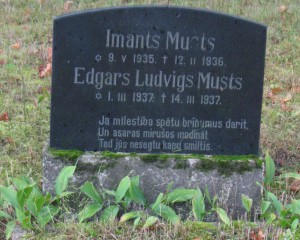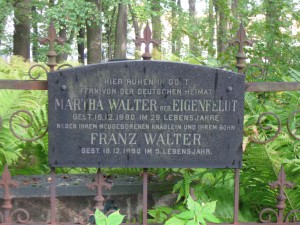What? No W, X or Y? Nope! Latvian does not have these letters, so we now have two left – Z and Ž. Now we have Z for the Family History Through the Alphabet challenge!
“Zemnieki” is the Latvian word for “peasants”, or, in the modern era, “farmers”. I don’t have my etymology dictionary handy, but the likely source of this word is “zeme” (meaning land) + “-nieks” (occupational suffix). The peasantry, and farming in general, have been extremely important to Latvian history, culture and national identity.
Prior to Latvian independence, the majority of ethnic Latvians were peasant farmers. At the time of the 1897 Census, the population was about 70% rural and 30% urban. Today, those percentages are switched – almost 70% urban and 30% rural. Compared to other countries, Latvia is still relatively rural – Canada is 80% urban, Australia 89% and the United States 82%. Even city-dwelling Latvians often have a property in the country that they go to on the weekends or holidays, that they may cultivate to one level or another, or, alternately, an allotment in the garden community outside of RÄ«ga known as DÄrziņi (“gardens”).
At the time of Latvian independence, the urbanization level stood at 23.5%. This means that Latvian farmers and country dwellers were both a) an important source of political support, and as a result, b), a group whose concerns needed to be met. This meant that agrarian parties, particularly the Latvian Farmers’ Union, were heavily represented in the interwar governments. While they did not hold the largest number of seats in the Saeima (Parliament), the party was however extremely influential, with a number of political leaders, including KÄrlis Ulmanis, Alberts Kviesis, ZigfrÄ«ds Anna Meierovics and Hugo Celmiņš (no relation to me), being members.
One of the biggest tasks undertaken by the interwar government was the task of land redistribution. Over half of Latvia’s agricultural land was nationalized by the early governments. Latvian independence had nullified any claims that German barons had over their widespread estates (I believe they were each allowed to keep 50 hectares of land). Much of this nationalized land was then made available for purchase by landless peasants, with priority and significant discounts to soldiers who fought in the War of Independence and their families. Most of these pieces of land were smaller than 22 hectares, but this appeared to be sufficient to meet the needs of the people. These newly created properties were called “jaunsaimniecÄ«bas” (“new farms”), in contrast to “vecsaimniecÄ«bas” (“old farms”), which were farms that had been purchased by peasants during the Czarist period. Over 50,000 “jaunsaimniecÄ«bas” were created in the interwar time period.
Not everyone got land, which meant that the rural social stratification that had started during the Czarist era – that is, the division between peasant landowners and landless peasants – still existed. Landless families that remained in the countryside (as opposed to heading to the city) would still need to rent land, or live and work on the land of a landowner. When the Soviets occupied Latvia, one of their main target groups for deportation in 1941 and 1949 were “kulaks”, that is, well-off farmers. This happened to some of the family of my great-grandfather PÄ“teris Eduards Celmiņš. His brother VoldemÄrs’ family, who owned StampvÄ“veri farm in Vijciems parish (where PÄ“teris Eduards was born), was one of these families. VoldemÄrs died en route to Siberia in 1949, but his wife MÄ«la and children Auseklis and Aija were freed in 1957. I don’t know what happened to them after that.
The Soviet era forced collectivization, the remnants of which can still be seen today – that is, Soviet apartment blocks in the countryside. Upon the restoration of independence, families could apply to get back the land that they lost as a result of the collectivization, which meant that they needed to prove, using land records and other documents, that they were entitled to the land they were requesting. These records are also held at the Latvian State Historical Archives.
The old land records will often give more information than just the land details – they will discuss transfers of land in the case of the death of the original owner, sometimes provide death or marriage certificates as supporting evidence with regards to rights to the land, and so on. It was not uncommon for women to own or inherit property. In fact, three out of four of my great-grandmothers were the ones who owned the family property in the interwar period, and at least two of my great-great-grandmothers inherited the family property during the Czarist period.
Today, farmers are still an important part of Latvia’s cultural fabric. People strive to buy Latvian produce and shop at local farmers’ markets. Cities are almost deserted at times of traditional festivals such as Midsummer. The Latvian Farmers’ Union political party still exists in a coalition with the Green Party (running for Saeima as “The Union of Greens and Farmers”), pursuing a strain of agrarianism familiar in the Nordic countries that is oriented towards small enterprises instead of large conglomerates.
Do you have comments, stories or questions on Latvia’s agricultural heritage? Share and we can find answers!


